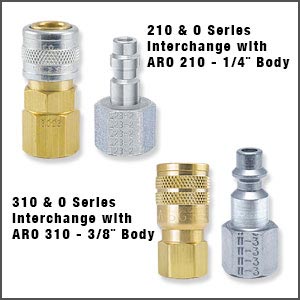
ARO Interchange
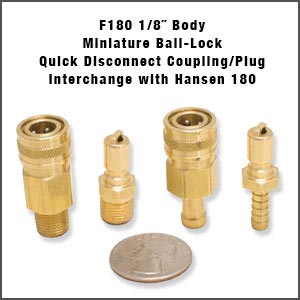
F180
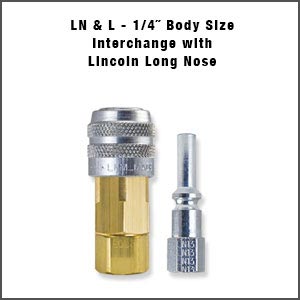
Lincoln Interchange
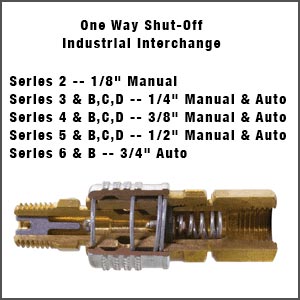
Industrial Interchange
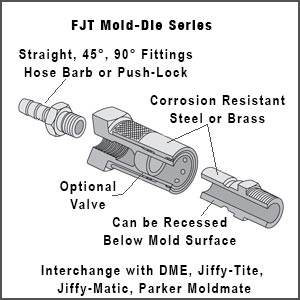
Mold/Die Style
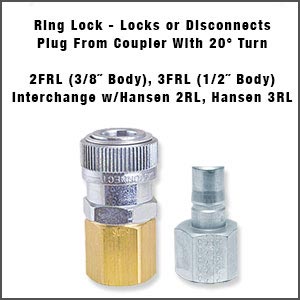
Ring Lock Style
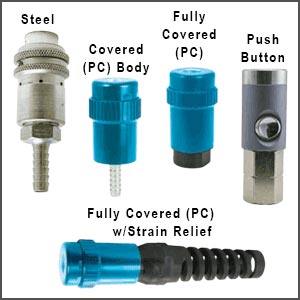
Safety Vent Style
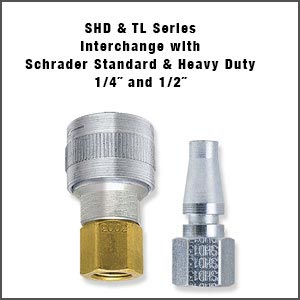
Schrader Interchange
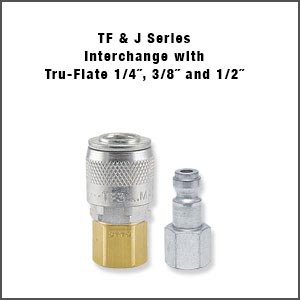
Tru-Flate Interchange
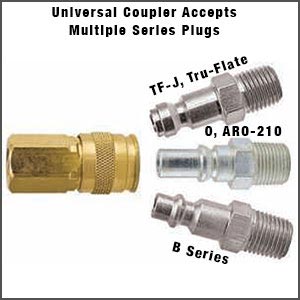
Universal
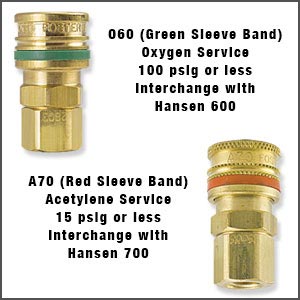
Welding Style
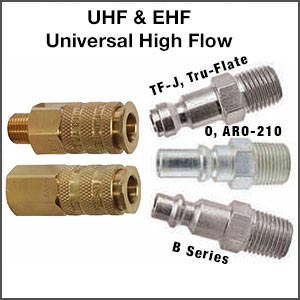












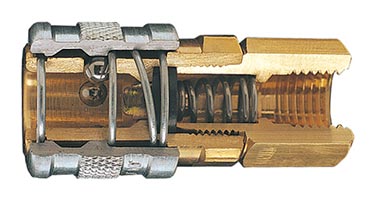
Manual sockets require manual retraction of the sleeve to both connect and disconnect the plug. Ball Lock (BL) is an optional feature available on manual sockets. After connection, the sleeve is rotated locking the coupler against accidental disconnect.
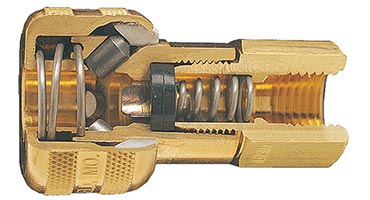
Automatic sockets accept the plug by simple insertion into the socket and do not require retraction of the sleeve to connect. Sleeve Lock (SL) is an optional feature on automatic sockets to prevent accidental disconnect. It is functionally the same as the Ball Lock (BL) on manual sockets.
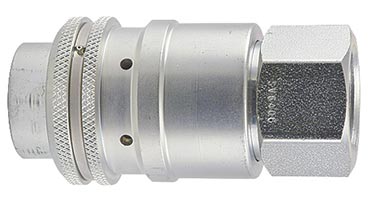
Safety sockets are a variation of automatic operation. The socket accepts the plug by insertion. The sleeve is moved straight forward to lock and turn on the air. The sleeve is moved back by rotating first to the left and then to the right. This shuts off the supply line, exhausts the downstream line, and then releases the plug.

In a “One-Way Shut-Off,” only the socket has valving to shut off the flow when disconnected; it is, therefore, installed on the pressure side of the line. The plug has no valving and exhausts the downstream line at disconnect.
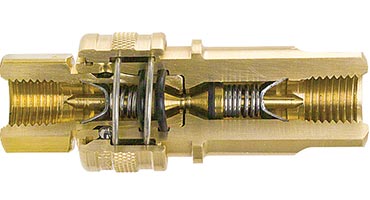
The “Two-Way Shut-Off” provides valving in both the socket and the plug, thereby shutting off flow at both of the disconnected ends. Originally developed for hydraulic lines, they are suitable for many other media because of the variety of metals and seal compounds offered.
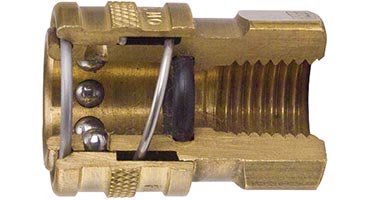
“Straight-Thru” couplers, as the name implies, do not have valving in either the socket or the plug. Therefore, both ends of the line are exhausted at disconnect.
How To Select –Proper quick disconnects selection is important because of the variety of media for which they are used. Four basic factors should be considered to assure proper selection:
Type – Operation – Flow – Media
Type – All quick disconnects consist of two basic components – a socket and a plug. The type of coupler varies by the valving arrangements in these two components.
Operation: Operation refers to the action required to connect and disconnect a coupler. Operation is a function of sockets only and does not vary for plugs.
Flow: The most important factor in properly sizing couplers is flow. Flow data is given throughout the catalog for industrial interchange design couplers, as well as many of Foster's interchanges for competitors’ non-standard designs. Where flow information is not shown, it is the same as the originating competitors’ non-standard design. Most One-Way Shut-Off non-standard couplers have the same flow as the same basic size industrial interchange design. All flows shown are for FPT couplers.
Media: The media flowing through the coupler will usually determine the type. Compressed air, many other gasses, and some liquids can be handled by One-Way Shut-Off couplers. Hydraulic fluids as well as many other liquids and some gasses require Two-Way Shut-Off. Straight-Thru couplers are suitable where there is no pressure in the line at connect or disconnect and loss of media at disconnect does not matter.
